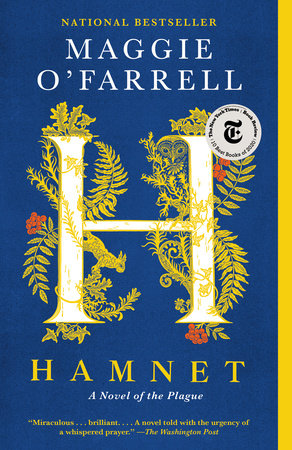Hamnet Review
A stunning historical fiction novel links a turbulent romance and a train filled to the brim with conflict.

Are you searching for the perfect antidote or accompaniment to a Shakespearean play? Or perhaps you’re on a quest to find a freshly-baked loaf of romance and tragedy? Well, look no further, because Maggie O’Farrell strikes again with her renowned Hamnet, a Shakespearean historical fiction novel that checks all the boxes while still maintaining historical accuracy. After it received a spot on the New York Times’s “Ten Best Books of 2020” list and the Women’s Prize for Fiction, I was not surprised to hear enthusiastic remarks about the novel from three of my favorite teachers. If you enjoy meticulously-twisted timelines, curated atmospheres, and female characters that break the manic pixie dream girl trope, you will find yourself amongst O’Farrell’s enthusiastic fans soon enough.
But what is an innovative novel without unforgettable characters? Maggie O’Farrell’s romantic timeline features Shakespeare, whom she refers to as “the Latin tutor,” and Agnes, his mystical love interest. Shakespeare grew up in the English merchant class, which often controlled children’s destinies based on their family’s profession, so you can imagine that some conflict occurs between his dreams and his reality. Caught between his family’s glove business and his abusive father, he struggles to find joy in the monotonous business tasks and troublesome days. To make matters worse, he has been forced—by a contract between his father and another businessman—to tutor a household of children in Latin (what a Peaky Blinders move!). All I can say is that we have ourselves an underdog. Agnes, however, has everything under control. Well, almost everything. Even though she has learned how to predict the actions of her “evil stepmother,” her life still remains unhappy. Don’t mistake this for a Cinderella scenario, though, because Agnes has some tricks up her sleeve. Her magical-realist backstory and the folkloric rumors surrounding her hint at her ability to concoct natural healing substances and see the futures of the people she encounters. Don’t forget the gossip about her signature pet, either! When a character is introduced while balancing a falcon on their fist (think Kate from The Mysterious Benedict Society), you know they’re going to be the star of the show. Therefore, it’s no surprise that Agnes controls the romance and bears the most tragedy in Hamnet.
The more recent timeline features the bond that Hamnet, whose name is historically interchangeable with Hamlet, and his sister Judith share as twins. Hamnet, a “sirrah,” or sir, who takes after his parents, embodies the feeling of summer with his daydreaming habit and easygoing aura. His gait and wistful gaze give him a playfulness that fills the novel with joy. Judith embodies a similar animated spirit but is quieter and more observant. The two complement each other perfectly in a way that will warm your heart. However, whether or not you know Shakespeare’s history, the inevitable conflict will hit you like a train.
As I mentioned, Hamnet consists of two timelines: a turbulent romance and a train filled to the brim with conflict. While some may be hesitant about being pulled between stories, O’Farrell makes an effort not to turn her book into a game of tug-of-war. Instead, she gracefully shifts between the two tales in ingenious ways, almost like Ottessa Moshfegh does in My Year of Rest and Relaxation. These intuitive shifts offer readers a refreshing break from the generic multi-character perspective formula. And, if you don’t enjoy the double timeline situation, the older plot phases out. While I didn’t particularly like the lack of momentum this caused, it was a necessary choice.
Whether you fancy a historical fiction novel or are new to the genre, Hamnet will drag you in with its playlistable atmosphere and heart-controlling plot. Its mixture of romance, tragedy, and knowledge of the plague allows it to reach readers of all interests. For me, Hamnet ranks a four out of five apples, an incredible feat for any book I read during the last few months of school.


























